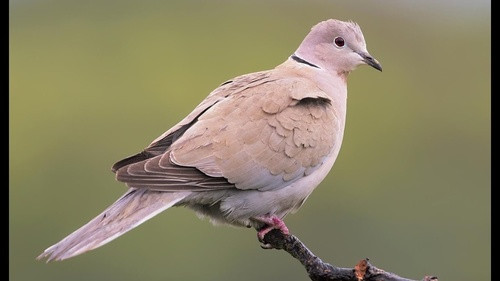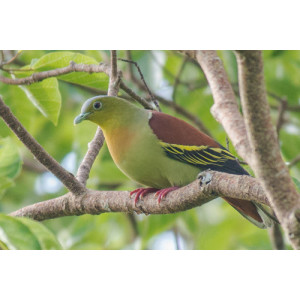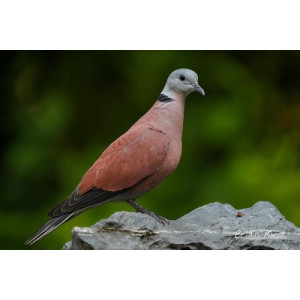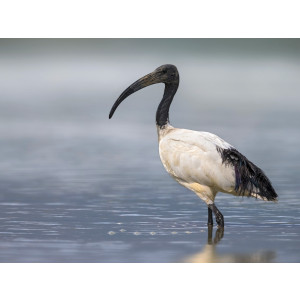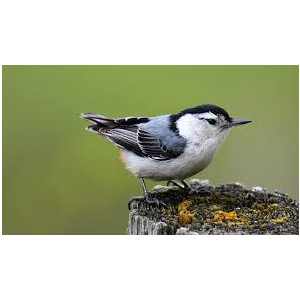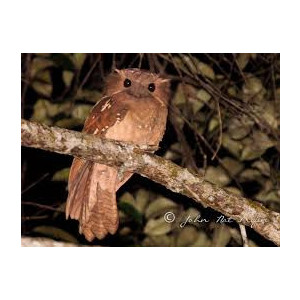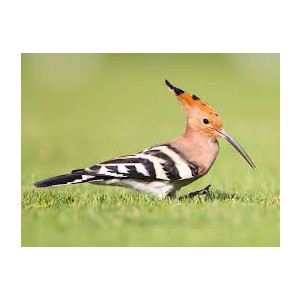Eurasian Collared Dove Did you see this animal?
Scientific Name : Streptopelia decaocto
Family : Columbidae
Order : Columbiformes
Class : Aves
Phylum : Chordata
Other Name : Indian Ring Dove, Collared Dove
Habitat : Villages
Description : The Eurasian Collared Dove is a pale long-tailed dove with a prominent black half collar on the hind neck (Adult bird length approximately 32 cm, weight 135 g, wing 17 cm, bill 2.1 cm, tarsus 2.2 cm, tail 12.5 cm). It looks plain pale fawn from above and pale pinkish-grey from below. Bill is brownish-black. The male and the female look alike. The courtship display of the male includes pursuits, cooing and bowing to the female. Eurasian collared doves have a strong affinity for human habitation, often breeding in close proximity to inhabited buildings where food resources are abundant and suitable trees are available for nesting. The majority of their nests are located within 1 kilometer (0.62 miles) of human settlements. The female lays two white eggs in a stick nest, which she incubates during the night while the male takes over during the day. The incubation period lasts between 14 and 18 days, and the young fledge after 15 to 19 days. Breeding can occur throughout the year when there is an ample food supply, but winter breeding is uncommon in regions with cold winters, such as northeastern Europe. It is common for Eurasian collared doves to have three to four broods per year, although records of up to six broods have been documented. These doves are monogamous and share parental duties when caring for their young.
Eurasian collared doves display a lack of wariness and often feed in close proximity to human settlements, including frequent visits to bird tables. The largest populations are commonly found around farms, where spilled grain is readily available around grain stores or where livestock are fed. They exhibit gregarious behavior, and sizable flocks form during the winter months around food sources such as grain (their main food), seeds, shoots, and insects. Typically, flocks range from 10 to 50 individuals, but flocks of up to 10,000 birds have been recorded.
Eurasian collared doves display a lack of wariness and often feed in close proximity to human settlements, including frequent visits to bird tables. The largest populations are commonly found around farms, where spilled grain is readily available around grain stores or where livestock are fed. They exhibit gregarious behavior, and sizable flocks form during the winter months around food sources such as grain (their main food), seeds, shoots, and insects. Typically, flocks range from 10 to 50 individuals, but flocks of up to 10,000 birds have been recorded.
Distribution in Bangladesh
References:
description written by:Fatema-Tuz-Zohora,Department of Zoology, Jagannath University,Dhaka;information source: Encyclopedia of Flora and Fauna of Bangladesh, Vol-26, iucnredlist.org;Photo credit and copyright:MSH Sourav (TU Dresden, Germany);taxonomic checklist:P. M. Thompson and S. U. Chowdhury (2020). A checklist of birds of Bangladesh.Birds Bangladesh;bird song owner:Jack Berteau(www.xeno-canto.org/Jack Berteau), bird sound copyright reserved according to www.xeno-canto.org rules; more information, please contact us.
description written by:Fatema-Tuz-Zohora,Department of Zoology, Jagannath University,Dhaka;information source: Encyclopedia of Flora and Fauna of Bangladesh, Vol-26, iucnredlist.org;Photo credit and copyright:MSH Sourav (TU Dresden, Germany);taxonomic checklist:P. M. Thompson and S. U. Chowdhury (2020). A checklist of birds of Bangladesh.Birds Bangladesh;bird song owner:Jack Berteau(www.xeno-canto.org/Jack Berteau), bird sound copyright reserved according to www.xeno-canto.org rules; more information, please contact us.
